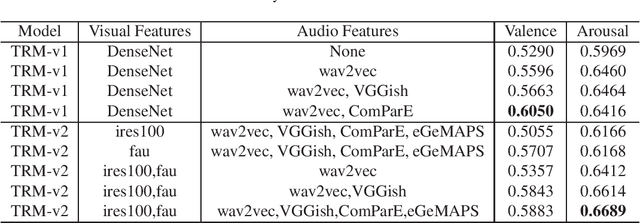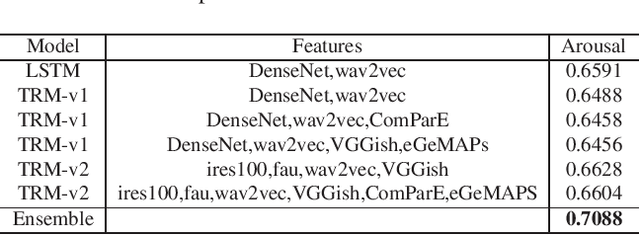Zhaopei Huang
Adaptive Temporal Motion Guided Graph Convolution Network for Micro-expression Recognition
Jun 13, 2024Abstract:Micro-expressions serve as essential cues for understanding individuals' genuine emotional states. Recognizing micro-expressions attracts increasing research attention due to its various applications in fields such as business negotiation and psychotherapy. However, the intricate and transient nature of micro-expressions poses a significant challenge to their accurate recognition. Most existing works either neglect temporal dependencies or suffer from redundancy issues in clip-level recognition. In this work, we propose a novel framework for micro-expression recognition, named the Adaptive Temporal Motion Guided Graph Convolution Network (ATM-GCN). Our framework excels at capturing temporal dependencies between frames across the entire clip, thereby enhancing micro-expression recognition at the clip level. Specifically, the integration of Adaptive Temporal Motion layers empowers our method to aggregate global and local motion features inherent in micro-expressions. Experimental results demonstrate that ATM-GCN not only surpasses existing state-of-the-art methods, particularly on the Composite dataset, but also achieves superior performance on the latest micro-expression dataset CAS(ME)$^3$.
ECR-Chain: Advancing Generative Language Models to Better Emotion-Cause Reasoners through Reasoning Chains
May 17, 2024



Abstract:Understanding the process of emotion generation is crucial for analyzing the causes behind emotions. Causal Emotion Entailment (CEE), an emotion-understanding task, aims to identify the causal utterances in a conversation that stimulate the emotions expressed in a target utterance. However, current works in CEE mainly focus on modeling semantic and emotional interactions in conversations, neglecting the exploration of the emotion-generation process. This hinders the models from deeply understanding emotions, restricting their ability to produce explainable predictions. In this work, inspired by the emotion generation process of "stimulus-appraisal-emotion" in the cognitive appraisal theory, we introduce a step-by-step reasoning method, Emotion-Cause Reasoning Chain (ECR-Chain), to infer the stimulus from the target emotional expressions in conversations. Specifically, we first introduce the ECR-Chain to ChatGPT via few-shot prompting, which significantly improves its performance on the CEE task. We further propose an automated construction process to utilize ChatGPT in building an ECR-Chain set, which can enhance the reasoning abilities of smaller models through supervised training and assist the Vicuna-7B model in achieving state-of-the-art CEE performance. Moreover, our methods can enable these generative language models to effectively perform emotion-cause reasoning in an explainable manner. Our code, data and more details are at https://github.com/hzp3517/ECR-Chain.
Multi-modal Emotion Estimation for in-the-wild Videos
Mar 31, 2022



Abstract:In this paper, we briefly introduce our submission to the Valence-Arousal Estimation Challenge of the 3rd Affective Behavior Analysis in-the-wild (ABAW) competition. Our method utilizes the multi-modal information, i.e., the visual and audio information, and employs a temporal encoder to model the temporal context in the videos. Besides, a smooth processor is applied to get more reasonable predictions, and a model ensemble strategy is used to improve the performance of our proposed method. The experiment results show that our method achieves 65.55% ccc for valence and 70.88% ccc for arousal on the validation set of the Aff-Wild2 dataset, which prove the effectiveness of our proposed method.
 Add to Chrome
Add to Chrome Add to Firefox
Add to Firefox Add to Edge
Add to Edge